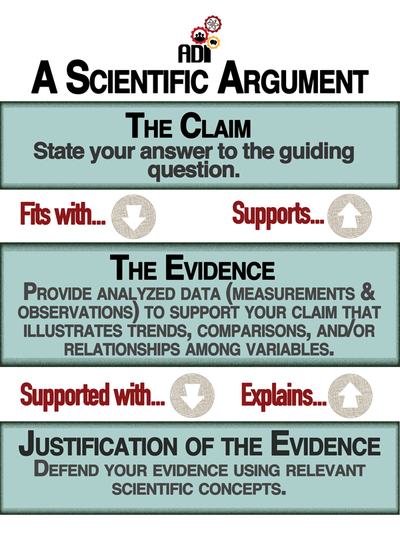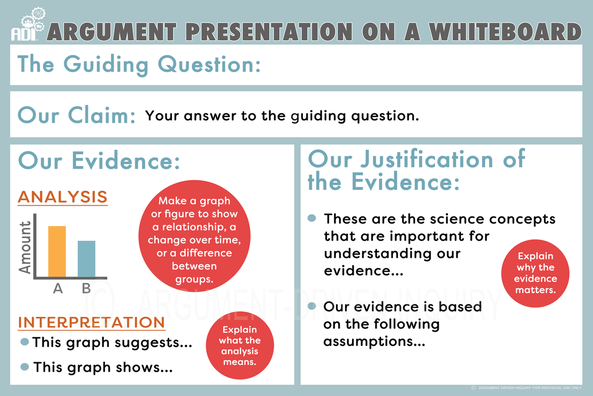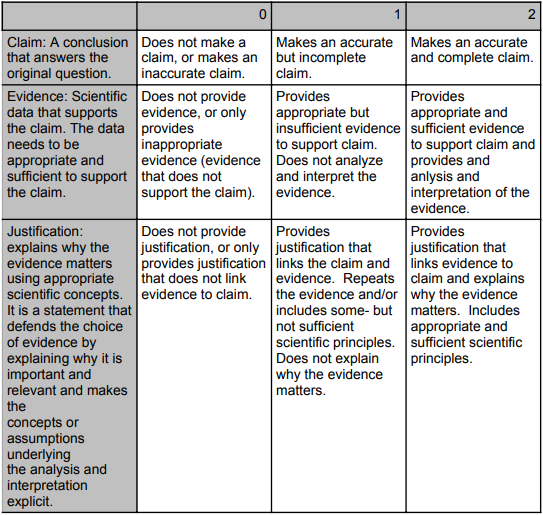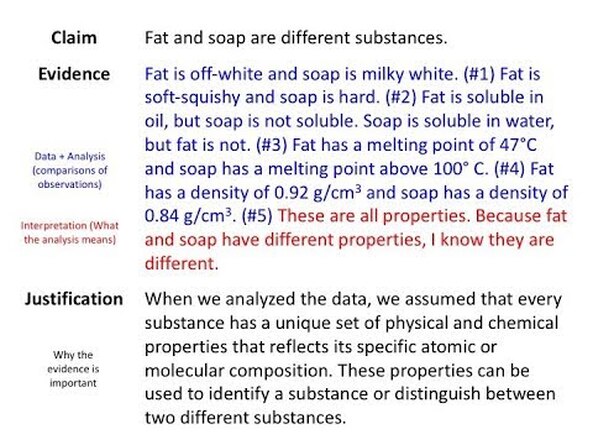In Class Inquiry Labs
Laboratory Investigations:
We will be conducting authentic scientific inquiry this year as well as developing scientific arguments. You will work in lab groups to construct and refine scientific models/explanatory hypotheses that you will test in the lab. Using claim/evidence/justification you will develop a scientific argument using your model to collect evidence that will support your claim. Use the grading rubric and example below as a guide when you construct your arguments.
Lab Requirements:
-Develop an argument
-Construct a model
-Determine if there is sufficient evidence to support a claim
-Provide justification using evidence to support a claim
As per the NYS lab requirement you must complete 1200 minutes of lab investigation. We will not be counting the number of labs since these investigations will take several class periods to complete. To check your lab minutes please click on the lab minutes tab above.
Lab Requirements:
- As a group, make a prediction for the research question.
- As a group, develop a model/explanatory hypothesis that you will test through experimentation to develop your claim. Remember to get feedback on your model/explanatory hypothesis from other groups and Mr. Palermo.
- Determine what your variables and constants will be and construct a data table(s) that you will use to collect your data (evidence).
- As a group determine the procedures for your experiment.
- Have Mr. Palermo check you procedures before conducting your investigation.
- Conduct your experiment and collect data (evidence) to investigate your model/explanatory hypothesis.
- Using your evidence, make a claim, then justify it with scientific reasoning. Your justification must contain scientific principles.
- Present your argument (CEJ) to the class on your whiteboard. You will then make 1 critique or positive comment about each group's argument.
- Then you will return to your lab station and as a group, determine if you need to make any adjustments to your model and or claim based upon the feedback from the class.
- The assessment of each lab will be individual and will focus on your ability to:
-Develop an argument
-Construct a model
-Determine if there is sufficient evidence to support a claim
-Provide justification using evidence to support a claim
As per the NYS lab requirement you must complete 1200 minutes of lab investigation. We will not be counting the number of labs since these investigations will take several class periods to complete. To check your lab minutes please click on the lab minutes tab above.
CEJ Grading Rubric
Example of a Level 2 CEJ Argument
Research Question: Are fats and soaps different substances?
Claim: Fat and soap are different substances (this answers the research question)
Evidence: Fat is off-white and soap is milky white. Fat is soft and soap is hard. Fat is soluble in oil, but soap is not soluble. Soap is
soluble in water, but fat is not. Fat has a melting point of 47C and soap has a melting point above 100C. Fat has a density of 0.92 g/cm3 and soap has a density of 0.84 g/cm3. (This is the data and analysis). These are properties and because fat and soap have different properties, I know they are different substances. (This is the interpretation or what the analysis means).
Justification: When the data was analyzed, we assumed that every substance has a unique set of physical and chemical properties that reflects its specific atomic or molecular composition. These properties can be used to identify a substance or distinguish between two different substances. (Why the evidence is important)
Evidence: Fat is off-white and soap is milky white. Fat is soft and soap is hard. Fat is soluble in oil, but soap is not soluble. Soap is
soluble in water, but fat is not. Fat has a melting point of 47C and soap has a melting point above 100C. Fat has a density of 0.92 g/cm3 and soap has a density of 0.84 g/cm3. (This is the data and analysis). These are properties and because fat and soap have different properties, I know they are different substances. (This is the interpretation or what the analysis means).
Justification: When the data was analyzed, we assumed that every substance has a unique set of physical and chemical properties that reflects its specific atomic or molecular composition. These properties can be used to identify a substance or distinguish between two different substances. (Why the evidence is important)
copyright ADI









